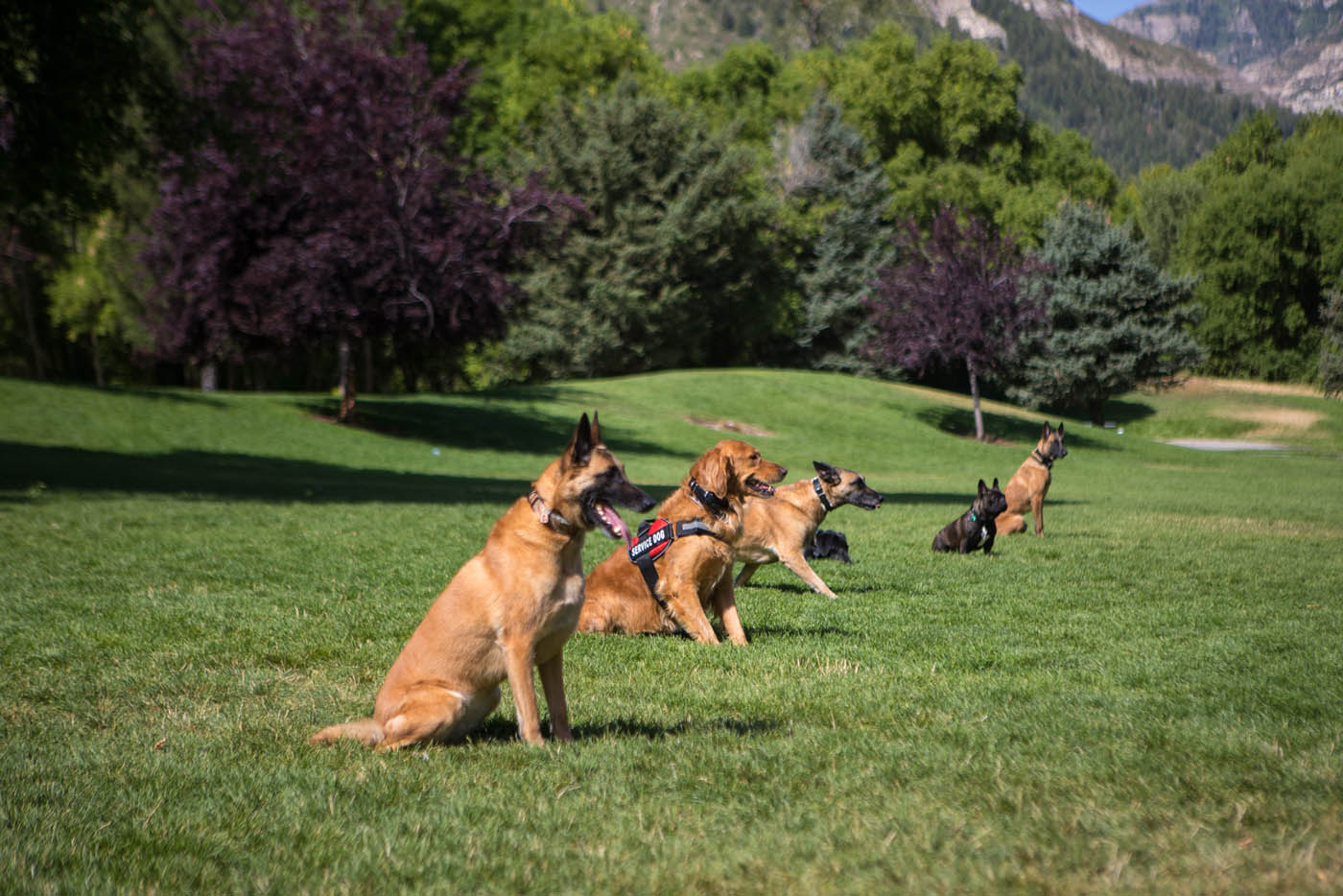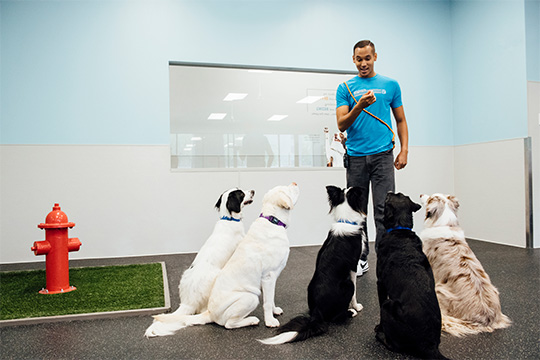Step-by-Step Approach to Dog Training: Simple Tips for Every Dog Owner
Step-by-Step Approach to Dog Training: Simple Tips for Every Dog Owner
Blog Article
Newbie's Guide to Successful Canine Training at Home
Successfully educating a pet dog in your home requires a nuanced understanding of canine actions and efficient communication techniques. Establishing clear training goals, using top quality incentives, and maintaining uniformity throughout family members are critical components. Moreover, integrating training into day-to-day routines can boost both engagement and retention. However, lots of beginner fitness instructors encounter obstacles that might impede progression. To navigate these complexities efficiently, it's vital to discover a number of vital elements that can change your method and bring about a harmonious connection with your pet dog. What basic principles should every newbie grip to make certain success?
Comprehending Canine Habits
Comprehending canine behavior is crucial for efficient training and cultivating a harmonious relationship between people and their canine buddies. Canines communicate primarily through body language, articulations, and facial expressions, making it crucial for owners to analyze these signals properly. Acknowledging habits such as tail wagging, roaring, or cring can provide understandings right into a pet dog's mood and intentions.

Common behavior problems, such as aggressiveness, anxiety, or extreme barking, frequently originate from misunderstandings or unmet requirements. Observing and dealing with these problems promptly can stop rise and make sure a favorable training experience. By fostering a deep understanding of canine actions, owners can tailor their training techniques to match their canine friends, inevitably resulting in a happy and well-behaved animal.
Necessary Educating Devices
A fully equipped training room can considerably boost the effectiveness of pet dog training in your home. Essential training devices make sure that both the dog and the trainer can take part in productive sessions that foster knowing and bonding.

Purchasing a durable leash and a comfortable, well-fitting collar or harness is essential for security and control. These devices assist establish borders and make sure the pet dog continues to be secure throughout training. Furthermore, a designated training location, devoid of diversions, aids concentration for both the fitness instructor and the pet.
Training help such as training pads, cones, or dexterity equipment can likewise enhance the experience by presenting variety and obstacles. Finally, having a note pad or digital application for tracking progress can be very useful, permitting you to keep in mind successes and areas for improvement. Making use of these crucial devices will develop a positive training atmosphere and lay the foundation for reliable knowing.
Developing an Educating Routine
Developing a consistent training routine is necessary for effective pet training in your home. A well-structured regular not just helps in strengthening preferred actions but likewise provides your pet dog with a complacency and predictability. To create an efficient training regular, start by recognizing specific training objectives, such as fundamental commands, leash walking, or house-training.
Select a designated time daily for training sessions, preferably when your dog is responsive and sharp. Procedure must be brief, about 5 to 15 mins, to keep emphasis and stop exhaustion. Uniformity in timing and setting will certainly improve your pet dog's knowing experience.
Incorporate training right into daily activities to strengthen abilities. Technique commands throughout walks or mealtime, which integrates learning right into all-natural regimens. In addition, continue to be adaptable and adjust the routine as necessary, suiting your pet's power levels and mood.
Favorable Support Techniques
Positive reinforcement strategies are basic to efficient pet dog training, advertising desired actions with incentives rather than penalty. This method makes use of favorable stimulations, such as deals with, praise, or play, to motivate pets to duplicate particular activities. The keystone of this method is timing; benefits should be offered quickly complying with the preferred habits to produce a clear association.
When implementing favorable support, it is necessary to select benefits that are motivating for your pet. High-value treats, such as small items of poultry or cheese, can be particularly reliable during training sessions. Additionally, differing the incentives can preserve your canine's interest and interest.
Beginning with easy commands, like "sit" or "stay," and slowly progress to much more complex jobs. Consistency is crucial; ensure that all member of the family make check my site use of the same commands and incentive systems to stay clear of complication.
In addition, it is crucial to continue to be patient and prevent aggravation. Pets, like humans, learn at their very own speed. By fostering a helpful training environment through favorable support, you can boost your pet dog's knowing experience while enhancing the bond between you and your hairy friend, preparing for effective training end results.
Common Training Obstacles
While training a canine in your home can be a fulfilling experience, it often features a set of usual difficulties that can evaluate both patience and consistency. One prevalent problem is distraction. Canines might end up being conveniently sidetracked by sounds, activities, and even scents in their environment, making it difficult to maintain their focus during training sessions.
Another challenge is disparity in commands and support. It can puzzle the canine and hinder progress if family members utilize different cues or rewards. Establishing a unified approach is necessary for reliable communication.
Furthermore, pet dogs can experience aggravation or stress and anxiety, specifically if they do not recognize what is anticipated of them. This can lead to unwanted habits, such as barking or eating.
Ultimately, the timing of support is important (Dog training). Postponed benefits can reduce the effectiveness of positive support, as pet dogs may fall short to link the habits with the reward
Getting over these difficulties requires commitment, clear interaction, and an organized training strategy. Acknowledging and dealing with these usual obstacles will certainly lead the method for a more effective and satisfying training experience in your home.
Conclusion
To conclude, successful pet dog training in your home demands an extensive understanding of canine actions and efficient communication strategies. By establishing clear training goals and using high-quality deals with alongside favorable support, the find out training process comes to be more gratifying for both the trainer and the pet. Uniformity, patience, and adaptability are necessary parts that promote discovering. Eventually, incorporating training into daily routines enhances the bond in between pet and owner, making the experience both satisfying and effective.
Establishing a regular training regimen is crucial for effective dog training at home.Positive support methods are essential to efficient dog training, promoting desired actions via incentives instead than punishment (Dog training). By cultivating an encouraging training setting with favorable reinforcement, you can enhance your pet's discovering experience while strengthening the bond between you and your fuzzy companion, laying the foundation for successful training end results
In verdict, successful dog training at useful site home demands a detailed understanding of canine actions and efficient communication techniques. By developing clear training goals and using top notch treats alongside favorable reinforcement, the training process becomes more rewarding for both the fitness instructor and the canine.
Report this page